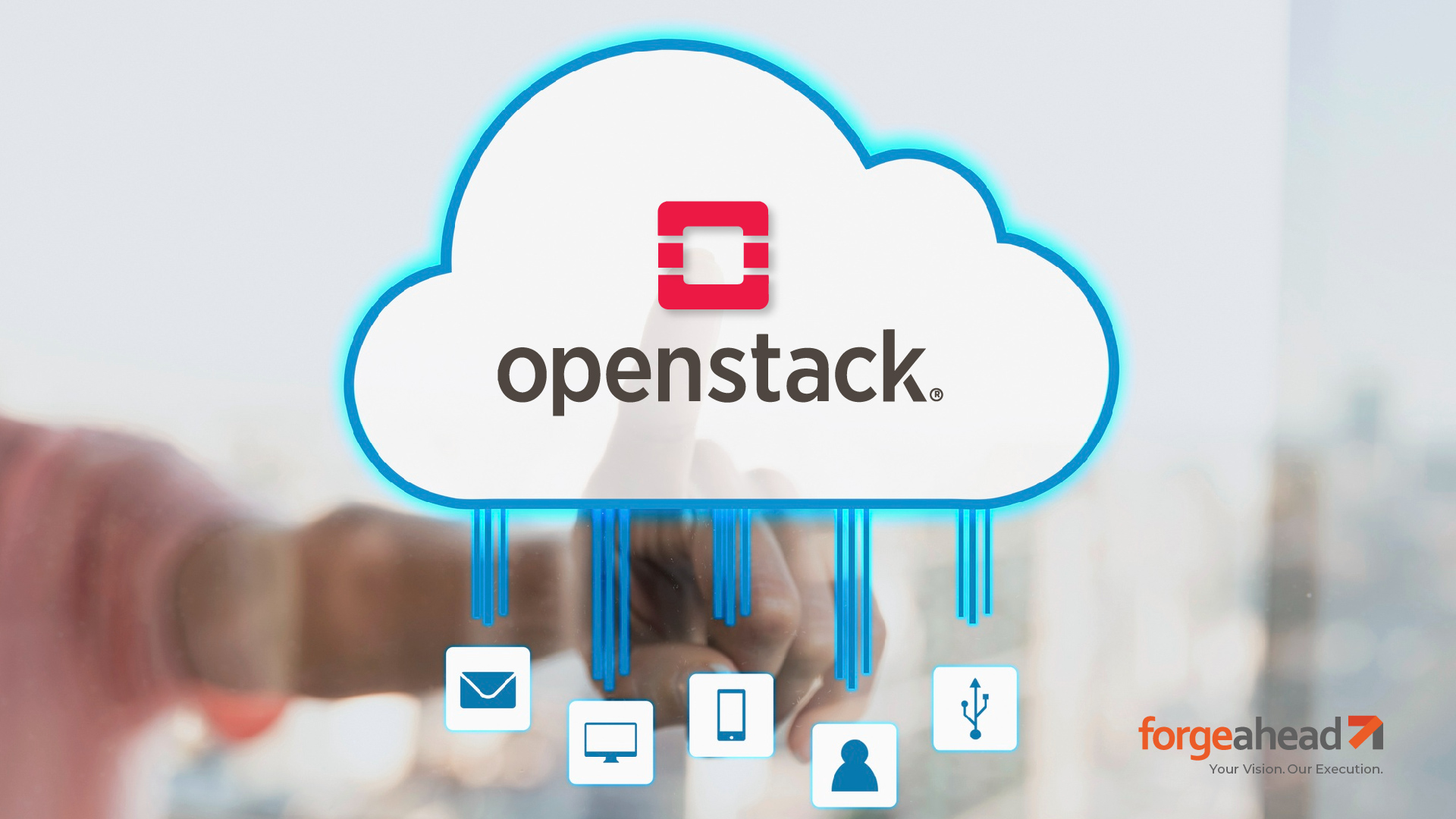OpenStack has transformed cloud infrastructure since its inception. Developed by NASA and Rackspace in 2010, OpenStack has grown into a leading open-source cloud platform, driving innovation and flexibility in IT environments.
History and Evolution of OpenStack Cloud Architecture
OpenStack started as a collaboration between NASA and Rackspace, aiming to create an open-source alternative to proprietary cloud solutions. Over the years, it has evolved, supported by a robust community of developers and companies.
Today, OpenStack powers some of the largest clouds in the world, offering a scalable and flexible cloud infrastructure.
Key Features of OpenStack Cloud Architecture
- Compute (Nova): Manages large networks of virtual machines, providing scalable compute resources.
- Storage (Swift and Cinder): Offers both object storage (Swift) and block storage (Cinder), ensuring data is efficiently stored and retrieved.
- Networking (Neutron): Facilitates complex networking capabilities, including IP address management, load balancing, and security groups.
- Orchestration (Heat): Automates the deployment of infrastructure resources, simplifying cloud management.
- Identity (Keystone): Provides authentication and authorization services for all OpenStack components, ensuring secure access control.
- Dashboard (Horizon): Offers a web-based user interface for managing OpenStack services, making it easier for users to interact with the cloud environment.
- Telemetry (Ceilometer): Monitors and meters the OpenStack cloud for billing, benchmarking, and scalability purposes.
- Bare Metal (Ironic): Allows provisioning of physical machines, expanding the flexibility and utility of the OpenStack cloud.
Conceptual Overview of OpenStack Cloud Architecture
Cloud computing provides on-demand access to computing resources over the internet. It allows organizations to scale their infrastructure dynamically, optimize costs, and enhance operational efficiency.
OpenStack is a leading open-source cloud platform that aligns with these principles by offering a scalable, flexible, and cost-effective solution for managing cloud infrastructure.
7 Components of OpenStack
OpenStack comprises several core components, each playing a crucial role in the cloud environment. The seven key components are:
- Nova (Compute):
- Function: Manages and provisions large networks of virtual machines (VMs).
- Role: Acts as the primary compute engine, responsible for deploying and managing VMs across the cloud infrastructure.
- Swift (Object Storage):
- Function: Provides a scalable storage system for unstructured data objects.
- Role: Handles the storage and retrieval of data objects via a RESTful API, ideal for data that do not require a fixed schema.
- Cinder (Block Storage):
- Function: Delivers persistent block storage to running instances.
- Role: Works like traditional hard drives, providing storage that can be attached to VMs for data persistence.
- Neutron (Networking):
- Function: Manages networking and IP addressing within the cloud.
- Role: Ensures that cloud resources are connected, offering network connectivity as a service between interface devices managed by OpenStack services.
- Keystone (Identity Service):
- Function: Provides authentication and high-level authorization.
- Role: Manages user authentication, access control, and service discovery, ensuring secure access to OpenStack services.
- Glance (Image Service):
- Function: Stores and retrieves virtual machine disk images.
- Role: Allows users to discover, register, and retrieve virtual machine images, supporting a variety of back-end stores.
- Horizon (Dashboard):
- Function: Provides a web-based user interface.
- Role: Allows administrators and users to manage OpenStack resources and services through a graphical interface, simplifying cloud operations.
High-Level Architecture
OpenStack’s architecture is modular, with each component interacting seamlessly to deliver comprehensive cloud services. The control plane manages resources and orchestration, while the data plane handles user data and workloads. Understanding these interactions is crucial for deploying and managing an efficient OpenStack cloud.
How do these components fit into your cloud strategy? Ready to explore the practical aspects of deploying and managing OpenStack?
Logical Architecture of OpenStack
Understanding the logical architecture of OpenStack is crucial for grasping how its components work together to deliver cloud services. This section delves into the core services, the distinction between the control plane and the data plane, and the interactions between various components.
Core Services of OpenStack
OpenStack’s core services are the backbone of its ecosystem, each playing a vital role in the cloud infrastructure:
- Nova (Compute): Manages and provisions large numbers of virtual machines, providing the compute resources needed for applications.
- Swift (Object Storage): Offers scalable storage for unstructured data, ensuring high availability and redundancy.
- Cinder (Block Storage): Provides persistent block storage volumes that can be attached to running instances, facilitating data management.
- Neutron (Networking): Delivers a robust networking-as-a-service model, enabling users to build complex network topologies.
- Keystone (Identity Service): Manages authentication, authorization, and service catalog, ensuring secure and controlled access to resources.
- Glance (Image Service): Handles the discovery, registration, and retrieval of virtual machine images, supporting multiple image formats and storage back-ends.
- Horizon (Dashboard): Provides a web-based interface for managing OpenStack services, offering users an intuitive way to interact with their cloud infrastructure.
Interaction Between Components
OpenStack’s components interact seamlessly to deliver a cohesive cloud experience:
- Nova and Neutron: Nova interacts with Neutron to provision and manage network resources for virtual machines, ensuring connectivity and network isolation.
- Cinder and Nova: When a virtual machine needs additional storage, Nova communicates with Cinder to attach block storage volumes, providing persistent storage for applications.
- Keystone and All Services: Keystone integrates with all other components to manage authentication and authorization, ensuring secure access and user management.
- Glance and Nova: During the launch of new instances, Nova retrieves the required images from Glance, ensuring that the instances boot with the correct configurations.
By understanding the logical architecture of OpenStack, IT managers, system administrators, and cloud architects can better plan, deploy, and manage their cloud environments, ensuring optimal performance and scalability.
Deployment Models of OpenStack
Understanding the deployment models supported by OpenStack is crucial for choosing the right approach based on your organization’s needs and workload demands.
This section explores public, private, and hybrid cloud models and discusses the architectural considerations for scalability and elasticity.
Comparison of OpenStack Deployment Models
| Deployment Model | Description | Benefits | Use Cases |
| Private Cloud | Managed by third-party providers, offering scalable and flexible cloud services to multiple organizations over the internet | Cost-effective for fluctuating workloadsNo upfront infrastructure costsRobust scalabilityAccess to a wide range of services | Ideal for startups, SMEs, and organizations with variable demand and limited budget |
| Public Cloud | Dedicated to a single organization, providing enhanced security and control over the infrastructure | Enhanced securityGreater controlCustomization optionsBetter performance | Suitable for large enterprises with stringent security and compliance requirements |
| Hybrid Cloud | Combines elements of both public and private clouds, allowing data and applications to be shared between them | FlexibilityCost-efficiencySeamless workload migrationDisaster recovery solutions | Beneficial for organizations that need to balance security and performance with scalability |
Scalability and Elasticity in OpenStack
Architectural Considerations for Scalability:
- Horizontal Scaling: OpenStack supports horizontal scaling, allowing you to add more instances to your deployment as demand increases. This approach enhances resource availability and distributes workloads more efficiently.
- Load Balancing: Implement load balancers to distribute incoming traffic across multiple instances, ensuring optimal performance and reliability.
- Auto-Scaling: Use OpenStack’s auto-scaling capabilities to automatically adjust the number of active instances based on real-time workload demands, providing elasticity and cost efficiency.
Elasticity:
- Dynamic Resource Allocation: OpenStack allows dynamic allocation of resources, enabling organizations to quickly adapt to changing workload requirements without manual intervention.
- Resource Pooling: By pooling resources, OpenStack ensures that computing power, storage, and networking are efficiently utilized, reducing waste and improving overall system performance.
Future Trends and Considerations
Emerging Technologies
- AI-Driven Cloud Management: Enhances operational efficiency and decision-making.
- Enhanced Security Features: Strengthens cloud infrastructure against threats.
- Improved Automation Tools: Streamlines processes, reducing manual intervention.
Integration with Emerging Technologies
- Containers: OpenStack integrates with Kubernetes for efficient container orchestration.
- Edge Computing: Processes data closer to the source, reducing latency and improving real-time data handling.
End Thoughts
We’ve explored the fundamental aspects of OpenStack cloud architecture, from its historical evolution and key features to its complex logical architecture and various deployment models. We’ve also discussed real-world use cases, highlighting the flexibility and scalability of OpenStack.
Ready to harness the power of OpenStack for your cloud infrastructure?
Contact Forgeahead today for expert guidance on deploying and managing your OpenStack environment. Let us help you navigate the complexities and maximize the benefits of this powerful open-source cloud platform.





